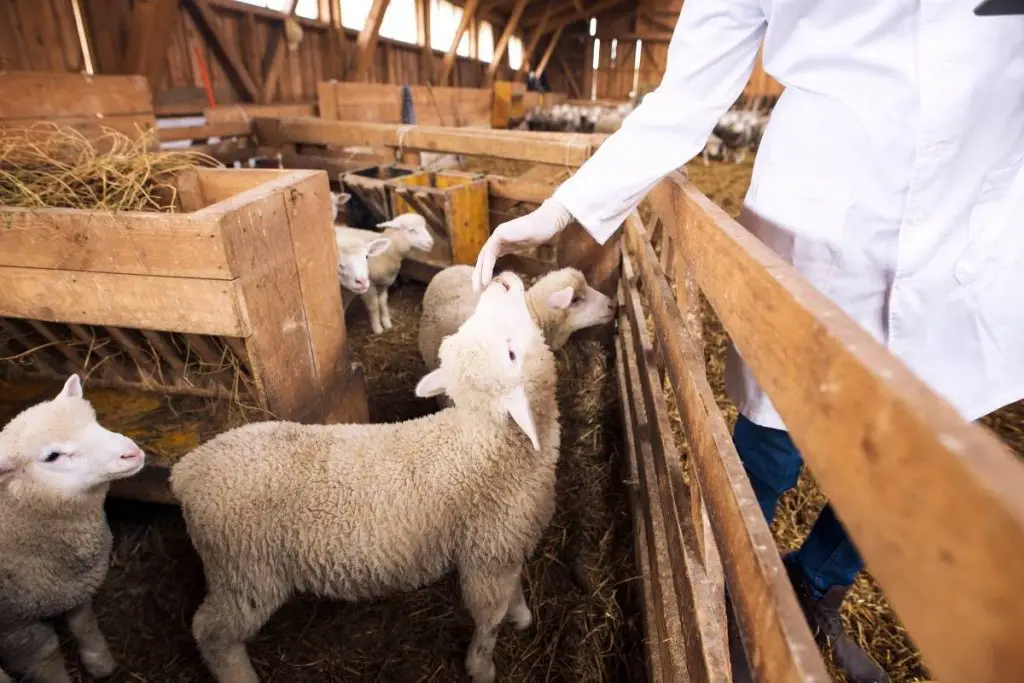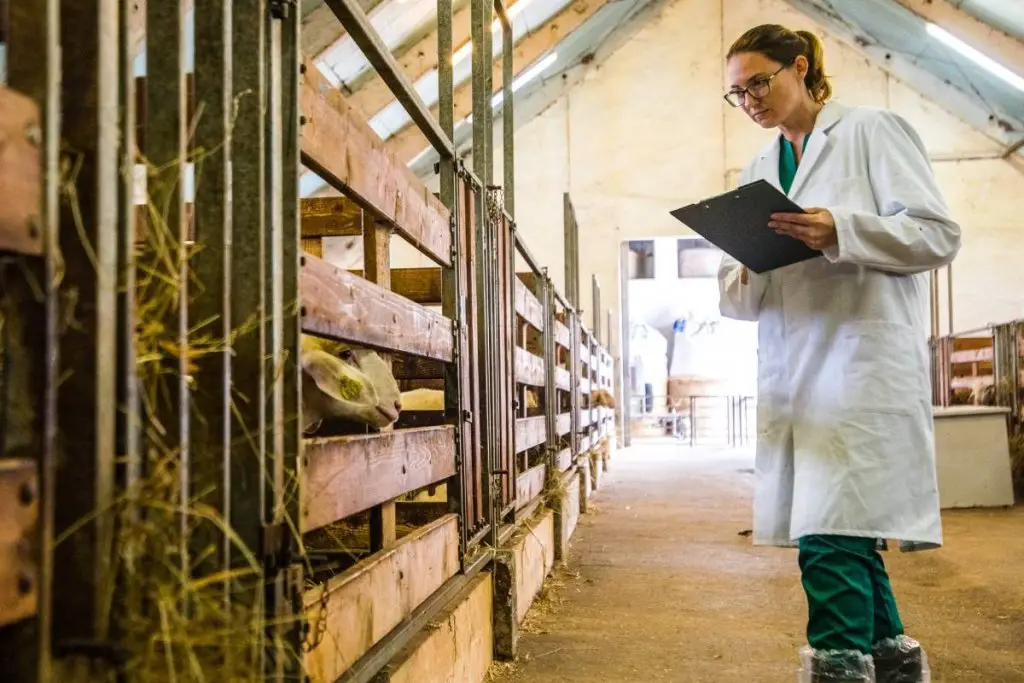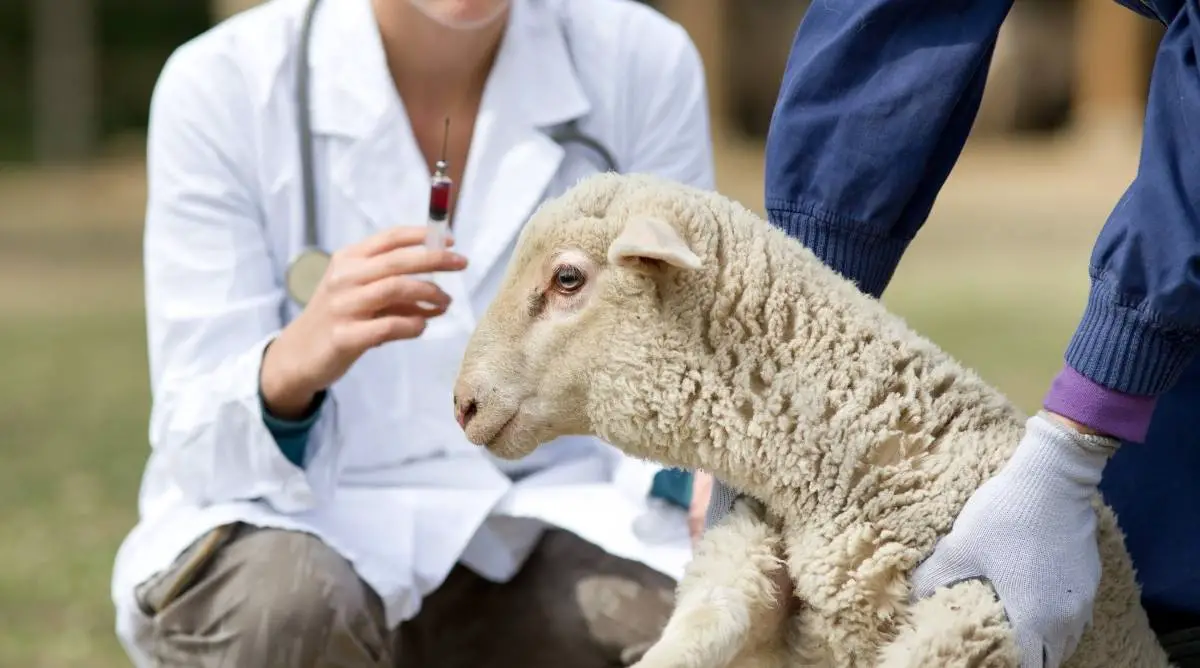The CDT vaccine for sheep keeps your flock healthy and safe from three types of bacteria—Clostridium perfringens type C, Clostridium perfringens type D, and Clostridium tetani. Clostridia bacteria can lead to sickness and death within hours or days from the appearance of symptoms.
Table of Contents
What is the CDT vaccine for sheep?
The CDT vaccine for sheep is a vaccine that protects sheep from diseases caused by three types of clostridia bacteria:
- Clostridium perfringens type C
- Clostridium perfringens type D
- Clostridium tetani
These bacteria multiply rapidly in the sheep’s body, producing toxins that cause disease or death.
Type C of the bacteria produces a beta toxin which causes Enterotoxemia Type C. Type D releases the epsilon toxin that causes Enterotoxemia type D. Clostridium tetani produces the tetanus toxin, which causes tetanus or lockjaw disease.
The risk of infection is high because these disease-causing bacteria exist naturally in most farms—in the soil, manure, and even in the gastrointestinal tract of sheep—making the CDT shot crucial for the health of any flock of sheep.
Mortality rates for unvaccinated sheep can be as high as 40%. The CDT vaccine is a universally recommended management tool for any sheep farmer.
At what age should sheep get CDT shots?

Sheep should get CDT shots regularly from birth through to adulthood.
Before the lambs are born, vaccinate pregnant ewes six weeks before lambing and then three weeks later.
Vaccinating ewes shortly before giving birth allows them to build the maximum number of antibodies against the bacteria toxins. The antibodies get passed to lambs through the colostrum, giving them passive immunity.
Lambs borne from vaccinated mothers get a booster CDT shot four to six weeks after birth. Afterward, they receive one other shot four weeks later.
Lambs born from unvaccinated mothers get immunized one to three weeks after birth, followed by two booster shots four weeks apart.
How often should sheep get the vaccine?
Adult ewes and rams should get at least one vaccine shot a year to boost immunity. Lambs should get three shots to ensure long-term protection. In addition, all lambs need to get injected with the vaccine before castration, docking, or ear tagging to prevent a tetanus infection. Rams should get a shot before the breeding season starts.
Adult sheep with no immunization history should get two shots at 4-6 week intervals, followed by another dose.
Young sheep from the feedlot who go out into pastures should receive a shot every 3-4 months to prevent enterotoxemia type D infections.
Side effects of CDT vaccines
Once sheep get the CDT vaccine, the injected area may become sore for up to three weeks after the immunization procedure.
The injected area may also develop an abscess.
CDT vaccine for sheep cost
The CDT shot for sheep costs between $0.30 and $0.50 per shot.
Tips on Using the CDT Sheep Vaccine

Here are a few tips on administering the vaccine:
- Read the manufacturer’s instructions on the dosage and method of storing. Dosage may depend on age, weight, and species.
- The CDT shot is injected under the skin either in the neck, over the ribs, in the armpit, or on the flank. Give the shot by pulling a bit of skin to form a tent shape, then insert the needle and press the plunger to release the toxoid vaccine. Ensure you remove any air in the syringe before injecting the vaccine into the sheep.
- Time the vaccines for your flock of sheep to ensure the sheep have protection throughout the year.
- Keep proper records of any vaccinations done for each sheep in your flock.
Clostridium perfringens type C
The type C bacterium exists in soil and manure and usually affects lambs that are less than three weeks old. Lambs can ingest the bacteria as they are suckling from a dirty or contaminated udder. Once it gets to the gut, it quickly multiplies, releasing the beta toxin that causes a blood infection in the small intestine.
Apart from vaccination, farmers can reduce infections by keeping the lambs and nursing areas clean.
Type C Risks
The proliferation of clostridium perfringens type C organisms in sheep leads to the buildup of dangerous beta toxins that eventually cause enterotoxemia type C. The condition is also known as hemorrhagic enteritis. Overgrowth of the type C bacteria is usually because of:
- Rapid change of the sheep’s diet.
- High consumption of milk, milk supplements, and protein supplements.
When the high starch, protein, or sugar feed gets to the gut, it provides an excellent environment for the growth of the bacteria that already exist in the animal’s stomach, resulting in increased toxin levels.
Type C Symptoms
Common symptoms of clostridium perfringens Type C are:
- Fatigue
- Loss of appetite
- Diarrhea with or without blood
- Stomach pain
- Sudden death
Type C Treatment and Prevention
Treatment is rarely successful. Veterinarians recommend farm owners routinely immunize sheep to prevent the onset of the disease.
Clostridium perfringens type D
Clostridium perfringens type D toxins exist in the stomachs of healthy sheep but at low levels that do not cause any harm. When sheep eat specific diets, particularly excess grains, the type D clostridial toxin increases, resulting in what is known as the “overeating disease.”
The type D strain usually occurs in fast-growing young sheep over one month old. The strain can be highly fatal, and death can happen in a matter of hours.
Type D Risks
The overgrowth of Clostridium perfringens type D in the sheep leads to the release of the lethal epsilon toxin that causes the overeating disease. Multiplication of the bacteria in sheep occurs when:
- Lambs consume a high grain and starch diet with little to no roughage. Excessive starch intake provides a conducive environment for the growth of the bacteria.
- Very young lambs drink excessive amounts of milk.
- Lambs have a weakened immunity due to sickness or stress.
Type D Symptoms
Type D toxin released causes damage to the sheep’s blood vessels, especially those in the brain. Usually, the first symptom of an infected flock is the sudden death of the fastest-growing lambs. Other symptoms that may appear before dying are:
- Convulsions
- The sheep may push its head against fixed objects
- Abdominal discomfort and pain
- Diarrhea with or without blood
- Head arching over the body
Type D Treatment and Prevention
Treatment such as antibiotics on the onset of symptoms does not guarantee recovery. Veterinarians recommend using preventative measures such as administering the CDT vaccine for sheep instead.
Clostridium Tetani
Clostridium tetani (C. tetani) produce toxins that cause tetanus. Like the types C and D, C. tetani exists on farms and in the sheep’s intestines. Tetanus-causing bacteria enters the sheep’s tissues and body through open wounds.
C. Tetani Risks
Clostridium tetani causes tetanus or lockjaw disease in sheep.
The risk of sheep developing tetanus increases during tail docking, ear tagging, shearing, and castration. Farm procedures that use elastrator bands instead of a surgical cut make sheep more susceptible to tetanus because the C tetani bacteria thrive in the dead tissue formed below the banded area.
C. Tetani Symptoms
Localized stiffness is one of the first symptoms observed in affected sheep. The stiffness happens around the wounded area, hind legs, and in the muscles around the neck. Stiffness in other body parts shows approximately one day later after localized stiffness.
Other symptoms include:
- Spasms. The spasm becomes more violent when the sheep experiences sudden movement or noise in its environment.
- Arched back
- Bloating
- Uncoordinated walking
- Intensified reflex actions
- Breathing problems
- Inability to eat or drink because of a locked jaw.
- Death
C. Tetani Treatment and Prevention
Treatment involves giving sheep an antitoxin which provides temporary protection against tetanus. Vets recommend following up the antitoxin with the toxoid vaccine to offer long-term immunity.
All management procedures like castration and docking should be done in aseptic conditions to minimize the chances of sheep developing tetanus. Keep the sheep in clean and uncontaminated environments after the surgery and clean wounds with oxidizing disinfectants which kill the tetanus spores.
CDT or tetanus toxoid vaccinations carried out at various times in the sheep’s life are the best method to prevent tetanus.

